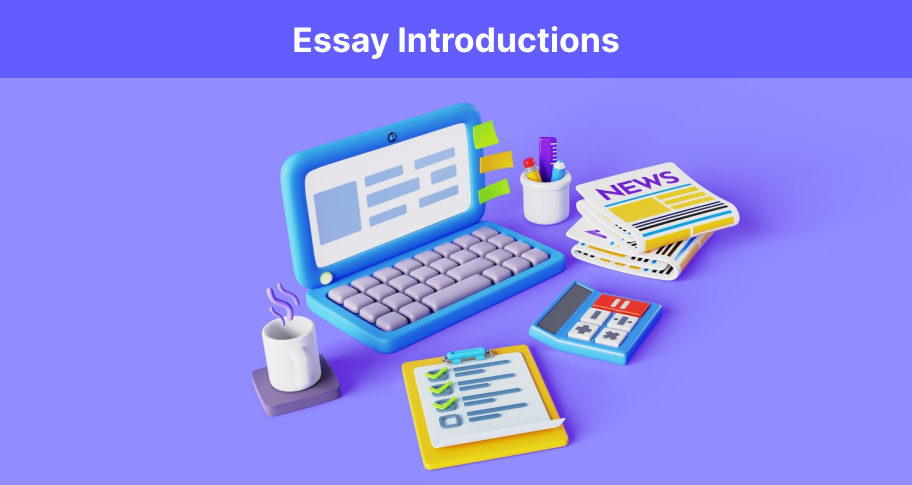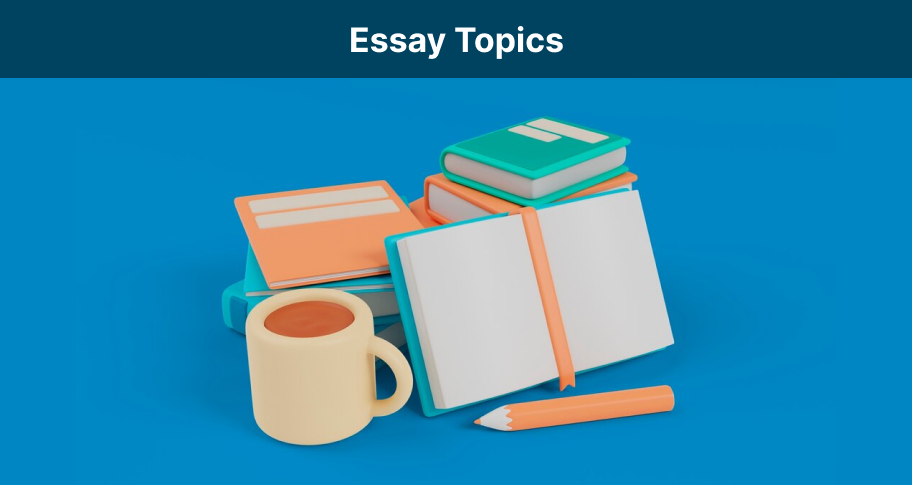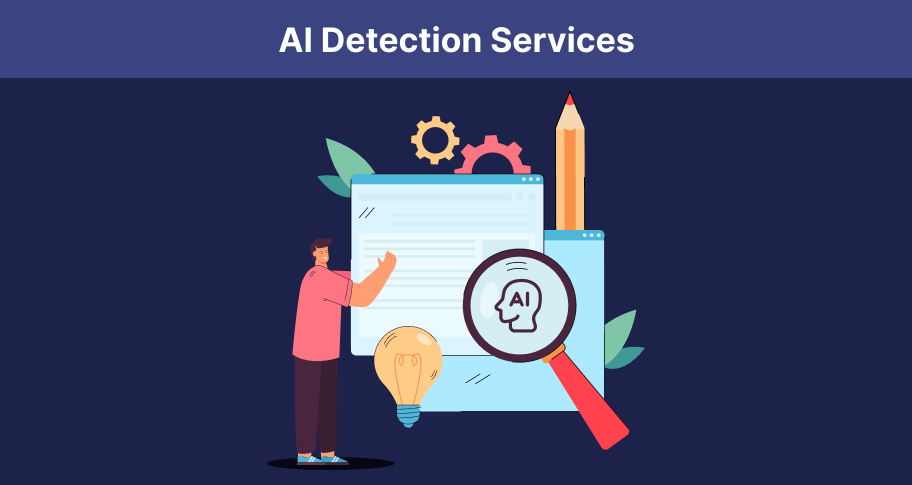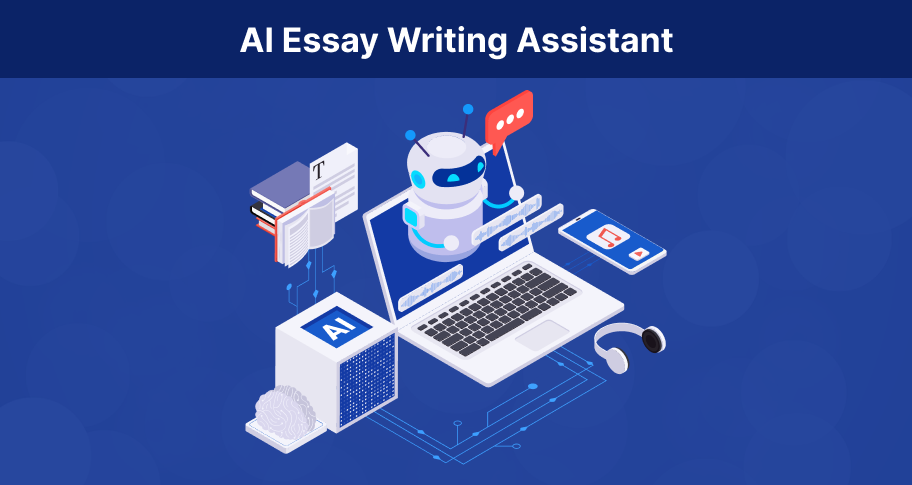Introduction
An essay introduction establishes tone and sets course. Every journey starts with one—whether you’re getting on a plane, starting out a new school year, joining a new club, or moving to a new neighborhood. The introduction is the welcome mat: it tells a lot about the house you’re about to enter. A warm introduction will make the house seem inviting or the plane ride ahead more pleasurable. A bad introduction is off-putting and makes one want to turn and run away.
In essay writing, the introduction sets the tone and presents the argument, drawing readers in. It engages the reader with a question, an idea, a concept, a fact, a figure, a facet of life to consider.
An effective introduction grabs attention and establishes a connection with the reader. The importance of crafting a strong opening lies in its ability to establish clarity and spur engagement from the start.
What is an Essay Introduction?
An essay introduction is the first paragraph of an essay: it introduces the topic and the main idea of the essay. It may also provide minimal background information to set the stage for the essay body.
Its primary function is to give readers a clear understanding of what the paper will discuss and why it matters. It should lay out for the reader in no uncertain terms why this essay is worth the reader’s time.
In academic writing, the introduction frames the argument and guides the reader through the essay’s structure. It typically includes a hook to catch the reader with an inviting lure, which is then followed by a thesis statement that presents the main argument.
This section also acts as a roadmap, giving readers a sense of what is to come.
The overall point of the introduction is to welcome the reader, get him to want to stay (i.e., read on), give him a map of the house and grounds, and set him on his way. It is a logical way to show the reader upfront all that you are going to allow for his inspection. It is your frame for the picture you are about to unfold. It is your approach to the topic.
Why is the Introduction So Important?
The introduction of an essay is fundamental because it is the first impression the reader gets of your writing. A strong introduction engages readers by providing a point of interest, appropriate context, clarity of purpose, and a well-defined thesis. It pulls the audience in like a tractor beam, slowly but surely. The reader should feel some interest in seeing how the argument unfolds. If the intro doesn’t hold the reader, the essay won’t get read.
Research shows that a captivating introduction often correlates with an overall captivating finished product. In other words, if the essay starts off well, it is likely that the rest of the essay will be polished, too. The polished the parts, the better the odds of getting an A. Better intros equal better essays which equal better academic performance.
That is why we say crafting the essay introduction is like pouring the foundation for the home: you are setting the argument and building the body on that. To pour the foundation properly, you need to dig down a bit—and the same goes for an essay intro. Dig in, dig down, find a nice hard, firm place to set up your thesis and present your argument on the rock you establish.
Of course, this is all easier said than done. No matter what you construct, it is going to take some effort, know-how, skill, and enthusiasm for the project. Many writers struggle with introductions because they are lack something in one or more of those departments.
If you are struggling, the first thing to keep in mind is that the essay introduction must balance capturing attention with clearly presenting the argument. The introduction requires a level of precision that can be challenging to reach—but you can do it by distilling the main message of your essay and presenting it in a few concise words. A successful introduction ultimately frames the essay in a way that makes the reader want to invest in the content.
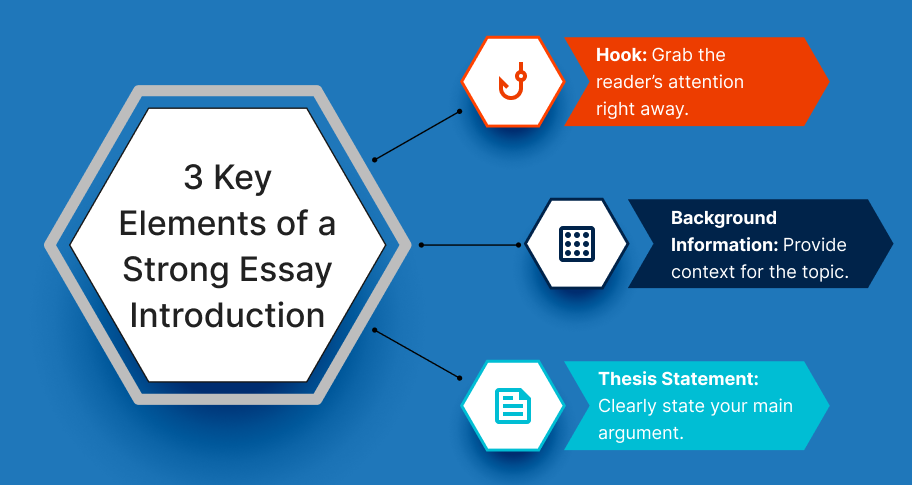
Elements of a Strong Essay Introduction
An effective essay introduction comprises several key components that work together to engage the reader and set the stage for a compelling argument. By carefully constructing each part, writers can create an introduction that is informative, engaging, and clear. Below are the critical elements of a strong essay introduction.
The Hook
The hook is the first sentence(s) of an essay, and its ultimate function is to grab hold of the reader the way a newsflash bulletin would. A well-crafted hook is like a vortex: it pulls the readers thoughts into the essay, so that he is totally absorbed in the reading. It is essential to writing an intro for your essay because it is the first impression that determines whether the audience will stay engaged or lose interest.
A strong hook is thought-provoking, relevant to the topic, intriguing, and reflective of the essay’s tone and purpose. For example, a fact, anecdote, rhetorical question, or quotation can be used as a hook, depending on the type of essay being written.
Examples of Strong Hooks
- Fact: “According to a recent study, students who write a well-structured introduction score 20% higher on their essays.”
- Anecdote: “I remember the first time I struggled with an essay introduction; it was like trying to build a house without a blueprint.”
- Thought-Provoking Statement: “What if the secret to a great essay isn’t in the body but in the first few lines?”
- Rhetorical Question: “Have you ever wondered why some essays capture your attention instantly while others leave you bored?”
Examples of Weak Hooks
- Generic Statement: “Essays are important in school.”
- Obvious Fact: “People write essays for many reasons.”
- Vague Question: “Do you know how to write an essay?”
The difference between a strong and weak hook lies in the specificity and depth of engagement. Strong essay hooks give readers something to think about or connect to their emotions: they explode in their minds like fireworks and dazzle in the night sky. A weak hook merely states obvious or uninteresting facts: it is bland, boring, like a bowl of porridge, and might as well have gone unsaid in the first place for all the impact it made.
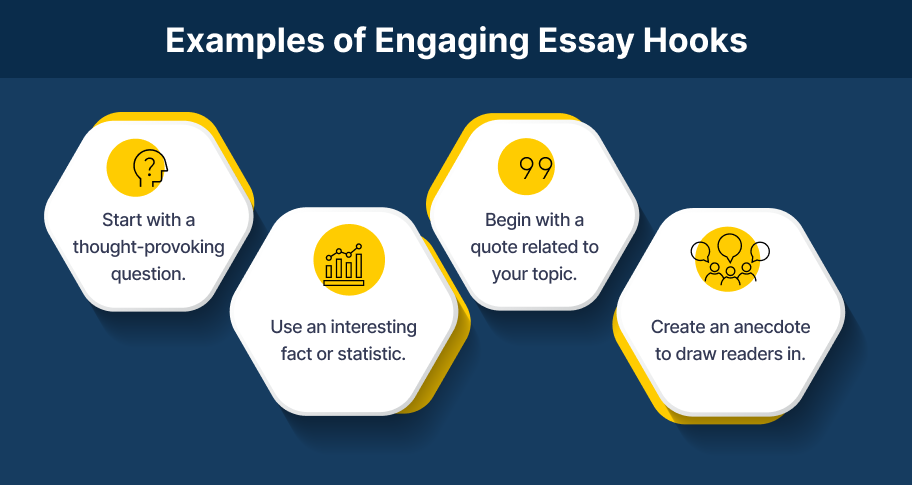
Background Information
After capturing the reader with a hook, the next step is to give some background information. Background info really depends on the audience: if your audience is not expected to know much at all about the subject, a broad overview can be most beneficial here. If your readership is already considered well-versed, you can segue into your thesis with minimal details and instead focus more on the reasons for which you will be making your argument. In general, definitions, historical context, or a brief overview of the topic can be fair game here. Basically, just give whatever the reader needs to know before diving into the main argument.
The challenge with providing background information is to strike a balance between offering enough context while not overwhelming the reader. Too much information can dilute the introduction and make it seem cluttered, but too little can leave the reader confused. The background should be relevant and directly related to the essay’s topic. Period.
Tips for Providing Background Information:
- Stay focused: Only include information that directly relates to the essay’s argument.
- Be concise: Keep the details brief and to the point, avoiding unnecessary tangents.
- Link to examples: If applicable, reference examples or sources that provide further reading for context, but don’t overload with too many external details.
For instance, in an essay about why Shakespeare’s Hamlet is a tragic figure, a writer might introduce the concept of tragedy as explained by Aristotle. This helps to set the stage and does not require a great deal of extraneous input. Proper context paves the way for the thesis statement, so that the reader is prepared to handle the topic.
The Thesis Statement
The thesis statement is the most essential part of any essay introduction. It is a single sentence (or sometimes two) that clearly states the essay’s main argument or point. The thesis statement gives the reader a sense of what the essay aims to do. It plainly tells the purpose and explains how the content will be structured. Without a clear thesis statement, the essay can seem directionless, and the reader may struggle to understand the writer’s point.
A strong thesis statement is specific, concise, and also debatable. That means it should present a point of view that can be supported by evidence and analysis in the essay’s body but that the reader might not agree with initially.
Examples of Strong Thesis Statements:
- Specific: “The rise of social media has challenged the role of legacy media in delivering news, information, and entertainment by democratizing the way people create and share content.”
- Debatable: “While some hold that standardized curriculum is necessary for national education, the reality is that education should vary from place to place and state to state based on culture, needs, and goals of the people there.”
- Clear: “If authorities want to reduce mass shootings and improve public safety, they need to address the cultural, spiritual and mental health crisis in America—not simply propose more gun laws.”
Examples of Weak Thesis Statements:
- Too Broad: “Social media has had a big impact on society.”
- Vague: “There are many arguments about standardized testing.”
- Obvious: “Gun control is a controversial topic.”
View 120,000+ High Quality Essay Examples
Learn-by-example to improve your academic writing
How to Structure Your Essay Introduction
Here’s how you can structure an introduction effectively, adjust it based on essay type, make sure its length is appropriate, and craft a smooth transition into the main body of your paper.
General Structure
The traditional structure of an essay introduction has three components: a Hook, Background Information, and a Thesis Statement.
- Hook: The hook is the first sentence or few sentences that grab the reader’s attention. It could be an interesting fact, a rhetorical question, a surprising statistic, or a quote. The goal is to engage the reader and spark curiosity about your topic.
- Background Information: After the hook, give some context or background information on the topic you’re writing about. This helps the reader understand the significance of the issue and prepares the reader for the thesis. Depending on the level of knowledge of the audience, the background could be brief or more elaborate.
- Thesis Statement: The thesis is the most important part of your introduction as it clearly states what your essay will be about, how it will proceed, and what your agument or point is. It should be as concise as possible and direct. It can be supported by a brief outline of the main points that will be explored in the essay.
Adjusting the Structure for Different Essay Types
- Argumentative Essay: In an argumentative essay, the introduction should provide a clear thesis that takes a stance on the issue. The background should include opposing viewpoints to set the stage for your argument.
- Expository Essay: For expository essays, the introduction should focus on explaining the topic in a neutral manner, with the thesis outlining what you aim to explain or analyze.
- Narrative Essay: A narrative essay introduction might begin with a personal anecdote or story as the hook, followed by setting the scene, and leading into the thesis or main point of the narrative.
- Descriptive Essay: In a descriptive essay, the hook will rely on vivid imagery that engages the senses, while the background introduces the subject that will be described in detail.
Length of an Introduction
The length of your introduction really depends on the overall length of your essay. As a general rule:
- Short Essays (500-1000 words): The introduction should be around 50 to 100 words, comprising about 10% of the essay. You can include a brief hook, followed by a concise background and thesis statement.
- Medium-Length Essays (1000-3000 words): The introduction should be 100-150 words, providing a slightly more detailed background to help the reader grasp the topic’s context.
- Long Essays (3000+ words): For longer essays, the introduction can span 150-250 words, with a more detailed background and multiple hooks to gradually introduce the thesis.
No matter the length, it’s important to maintain a balance between brevity and clarity, so that your introduction is engaging but not overwhelming.
How to Transition into the Main Body
Transitioning smoothly from your introduction to the main body of the essay is necessary for maintaining flow. A common technique is to end your introduction with a transition sentence that connects the thesis to the first body paragraph.
This transition sentence should hint at the first point or argument you will explore in the essay’s body. Using it allows you to create a logical progression from the general idea presented in your thesis to the specific details in the body paragraphs. For example, if your thesis mentions several factors, your transition sentence can introduce the first factor in more depth. Alternatively, you can use transitional phrases such as “To begin with,” “Firstly,” or “The first aspect to consider” to guide the reader into the next section.
Effective transitions not only keep your writing coherent but also help the reader understand the direction your essay will take from the very start.
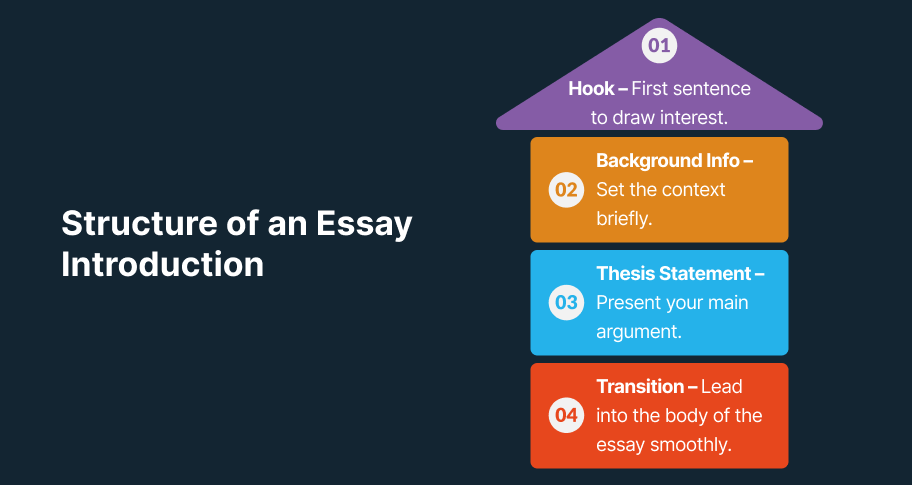
Common Mistakes in Writing Essay Introductions
Many writers fall into common traps that can undermine the effectiveness of their opening. Avoiding these mistakes will keep your introduction clear, engaging, and purposeful.
Being Too Vague
One of the most common mistakes in writing an essay introduction is being too vague or general. A vague introduction will lose the reader’s interest because it will seem that the essay has no apparent point. When the introduction lacks focus, the reader assumes the rest of the essay does as well.
For example, starting with a broad statement like “Many people write essays” doesn’t tell the reader much about the specific argument or issue you plan to address. Instead, your introduction should immediately indicate the relevance of your topic and narrow down to your main point. Engage the reader with a clear, focused hook and relevant context to gain and maintain their interest. Remember, readers want to know what your essay is about right from the start, so avoid being overly general or vague.
Overloading with Background Information
Another common mistake is including too much background information in the introduction. While some context is necessary to set up the thesis, overloading your introduction with excessive details can exhaust the reader’s patience. Introductions that turn into a history lessons or a detailed expositions rob the main argument of its impact.
For instance, if you’re writing an argumentative essay on the Civil War, there’s no need to bring up the Federalist Papers—unless, of course, it relates directly to your thesis. Nonetheless, the intro should focus on the most relevant background information needed to understand the thesis. The rest of the essay is where you can go into details. Keep the introduction concise. Background information only needs to be a bridge to the thesis.
Forgetting the Thesis Statement
A big but common mistake in writing introductions is forgetting to include the thesis statement. Most writers do this simply because they themselves don’t know what their point is. Take time to consider it. The thesis is the end goal of your essay—the point it is all about. Without it, the introduction and the essay overall will lack direction and will leave the reader uncertain about the essay’s purpose.
A strong thesis should clearly state your position or the points you’ll discuss in the essay. Omitting it would be like inviting your friends to a dinner and then forgetting to cook the food.
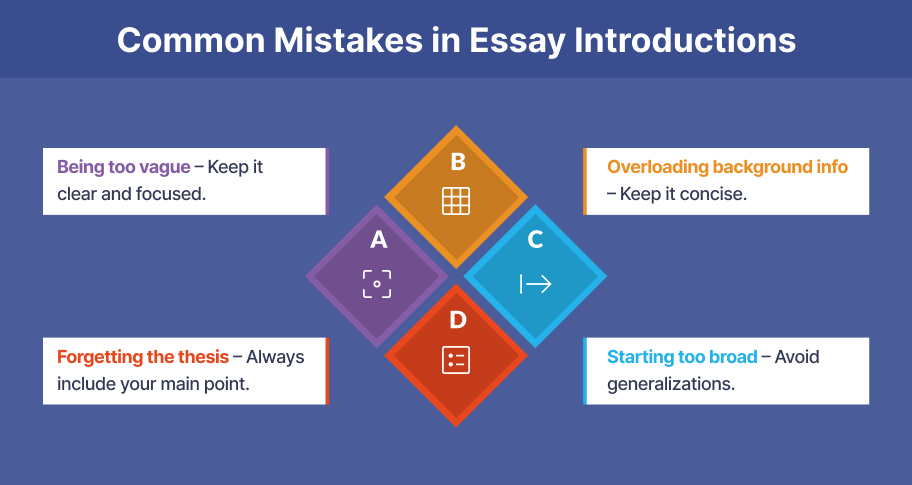
Examples of Effective Essay Introductions
Here are some examples of essay introductions to help you see how they can be crafted.
Argumentative Essay Introduction
Topic: Should the Death Penalty Be Abolished?
“The debate surrounding the death penalty has been ongoing for decades, with proponents claiming it deters crime and serves justice, while opponents argue that it violates fundamental human rights. As we move further into the 21st century, questions about the morality, fairness, and effectiveness of capital punishment have become more pressing. This essay will argue that the death penalty should be abolished, not only because of its failure as a deterrent but also due to the irreversible nature of wrongful executions and the disproportionate impact on marginalized communities.”
Why It Works:
This introduction hooks the reader by presenting the ongoing debate, then clearly states the position the essay will argue, making it easy to follow and engage with.
Expository Essay Introduction
Topic: The Invention of the Printing Press
“The invention of the printing press in 1440 by Johannes Gutenberg was a turning point in European history. For the first time, books could be mass-produced, leading to the spread of ideas, the democratization of knowledge, and significant social, religious, and cultural shifts. This essay will explore the impact of Gutenberg’s invention on society, including its role in the Protestant Reformation and the broader intellectual awakening known as the Renaissance.”
Why It Works:
The introduction provides relevant historical context, establishes the importance of the topic, and outlines what the essay will cover, making it easy for readers to understand the scope of the discussion.
Narrative Essay Introduction
Topic: A Lesson Learned from Failure
“I’ll never forget the moment I heard my name announced as the runner-up in the statewide debate competition. It wasn’t the disappointment of losing that stuck with me, but the realization that my failure was entirely my own doing. In the weeks leading up to the event, I had neglected to properly prepare, overconfident in my abilities. This experience taught me the value of hard work and humility, and it forever changed the way I approach challenges in life.”
Why It Works:
This introduction draws the reader into a personal story, immediately engaging them with a relatable experience. It sets up the main theme of the essay—personal growth through failure.
Descriptive Essay Introduction
Topic: A Childhood Memory
“The scent of freshly baked cookies always transports me back to my grandmother’s kitchen. The warm, sugary aroma combined with the gentle hum of the oven and the soft clink of the cookie sheet against the countertop brings a wave of nostalgia. The kitchen, bathed in soft afternoon light, was my childhood haven, a place of safety, love, and the simple joy of baking. This essay will take you through that cherished memory, capturing the sights, sounds, and smells that made it so unforgettable.”
Why It Works:
The use of vivid sensory details immediately creates a strong image in the reader’s mind, engaging their senses and emotions. It sets the stage for a descriptive exploration of a meaningful memory.
Hopefully, these essay introduction examples have given you an idea of what works, why, and how. Let’s recap what we’ve learned!
View 120,000+ High Quality Essay Examples
Learn-by-example to improve your academic writing
Essay Introductions FAQ
- How long should an essay introduction be?
- This varies based on the overall length of the essay. For shorter essays (500–1000 words), the introduction should be about 10% of the total word count, while for longer essays, you may need a more detailed introduction, especially if complex background information is required. If the essay is 3000 words or more, try to keep the introduction somewhere around 200-250 words.
- Can I start my essay with a question?
- Yes, starting with a rhetorical question can be a powerful hook, as long as it engages the reader and relates to the essay’s topic. Make sure it fits the tone of the essay and doesn’t sound too informal or out of place in academic writing. Also make sure it is relevant to your essay’s thesis.
- What’s the difference between a hook and a thesis statement?
- A hook is meant to grab the reader’s attention in the first sentence, while a thesis statement presents the central argument or purpose of the essay, typically at the end of the introduction. The two should relate somehow, though—usually the hook reflects some aspect of the thesis that you will be defending.
- Can I use a quote in my essay introduction?
- Yes, using a relevant quote can be an effective hook, but make sure it directly ties into your essay’s topic. Avoid overused or clichéd quotes that don’t add value to your argument. And always cite the source if you do use a quote.
Conclusion
Mastering your essay introduction involves carefully balancing three key elements: the hook, background information, and thesis statement. The hook grabs the reader’s attention, the background provides needed context (but doesn’t overwhelm with too many details), and the thesis clearly outlines the main argument and direction of the essay. Avoid common pitfalls like being too vague, overloading the introduction with unnecessary information, or forgetting the thesis.
Strong introductions set the tone for a well-structured essay and guide the reader effortlessly into the main body. The more you practice writing introductions, the better you’ll become at creating clear, engaging, and effective openings. Continuously refining these skills will not only strengthen your essays but also ensure your readers are hooked from the very start. Remember, a powerful introduction lays the foundation for a compelling essay!
Make sure you download our essay introduction worksheet, to help get you started.

